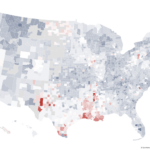Top operators aren’t asking how to sell more. They’re asking how to keep more. Volume without discipline masks margin decay—split pressure, rising lead costs, and longer cycle times quietly compress earnings. If your dashboards aren’t engineered for decision velocity, you’re subsidizing complexity and calling it growth.
This brief isolates the seven metrics that govern brokerage profitability in 2025. They are not vanity KPIs. Each one ties directly to cash, control, and capacity. Review them weekly. Resource against them monthly. Incent on them quarterly.
1) Operating Margin (EBITDA Margin)
Definition: Earnings before interest, taxes, depreciation, and amortization divided by total revenue. It’s the blunt instrument for brokerage profitability and the first place to detect structural bloat. In a commission-compression environment, margin is won through cost architecture and platform leverage, not price.
Proof: Industry outlooks continue to flag tighter spreads—higher acquisition costs, heavier compliance load, and rising service expectations. Macro reports like Emerging Trends in Real Estate 2025 point to an operational premium on efficiency and disciplined resource allocation.
Directive: Set a minimum target margin by business unit (company leads, sphere, teams). Force all budgets to zero-based assumptions annually. Tie leadership bonuses to sustained margin above threshold, not revenue milestones. If you can’t get paid on EBITDA, you’re managing sentiment, not a firm.
2) Gross Profit per Producing Agent
Definition: Company dollar minus direct agent services cost, divided by the count of agents who closed at least one side in the trailing 90 days. This isolates contribution and prevents non-producers from masking per-capita performance.
Proof: Brokerage rosters swell during hot cycles and shrink when the market normalizes. The 2024 Profile of Real Estate Firms underscores the operational importance of productivity concentration. Your average should climb as you replace non-producing headcount with fewer, higher-output agents supported by tighter platforms.
Directive: Publish a firmwide floor for gross profit per producing agent. Build a simple report: top quartile, median, and bottom quartile by cohort (tenure, team vs. solo, lead source mix). Move resources out of the bottom quartile and into enablement for the top quartile. This is the fastest lever for brokerage profitability.
3) Net Recruiting Yield
Definition: New producing agents minus producing-agent attrition over a rolling 6–12 months. Measure yield, not signups. A 20-agent win means little if 15 leave or never ramp.
Proof: Rankings like the 2024 RealTrends 500 show concentration at the top; growth now favors firms with disciplined talent systems and structured ramp. Random recruiting drives churn and platform waste.
Directive: Establish a 90-day ramp plan with clear production milestones, marketing SLAs, and coaching cadence. If an agent misses two consecutive milestones, exit or reassign to a low-cost service tier. Tie recruiter compensation to 6-month production persistence, not day-one signings.
4) CAC:LTV (Agent and Transaction-Level)
Definition: Customer acquisition cost (recruiting and marketing) to lifetime value (gross profit over a defined horizon). Track this for agents and for company-generated transactions.
Proof: As paid media costs rise and organic lead conversion cools, CAC discipline decides whether scale creates equity or burn. Cross-industry benchmarks (SaaS, professional services) consistently show CAC:LTV as the gating factor for sustainable growth; the same logic applies to brokerage unit economics.
Directive: Compute CAC inclusive of time cost. Use conservative LTV windows (12–24 months) and include churn risk. Refuse channels where CAC:LTV exceeds 1:3 without a clear path to system leverage (automation, routing, scripting). This is the backbone math of brokerage profitability—review it before approving any new spend.
5) Pipeline Velocity and Conversion Integrity
Definition: Lead-to-appointment, appointment-to-contract, and contract-to-close conversion, plus median days-in-stage. Velocity compounds cash; slippage compounds cost.
Proof: Firms with defined handoffs and routing rules outperform those with “open pool” chaos. Market reports, including Emerging Trends in Real Estate 2025, continue to call for process maturity as the differentiator in thin-margin environments.
Directive: Instrument CRM stages. Enforce same-day speed-to-lead and 72-hour appointment follow-ups. Publish conversion ladders by source and by agent weekly. Remove leads from agents who miss SLAs and route to proven converters. Incentives should reward stage adherence and cycle-time reduction—not just closed volume.
6) Cost to Serve per Transaction
Definition: Fully loaded cost to deliver one closed side, including transaction coordination, compliance, E&O, marketing assets, platform fees, and support headcount. Segment by lead source and by service tier.
Proof: What you offer as “value” is an expense unless the agent’s incremental production or retention covers it. In mature firms, 10–20% efficiency gains typically sit in redundant tools, underused seats, and unmanaged service creep.
Directive: Quarterly, run a zero-use kill list. Audit platform utilization by seat. Package services into tiers with clear eligibility tied to contribution margin. If a feature doesn’t move conversion or retention, decommission it. Cost to serve must decline as volume rises; if it doesn’t, you’ve built a boutique with enterprise overheads.
7) Cash Conversion and Runway
Definition: Days from cash outlay (marketing, payroll) to cash inflow (closed commissions) and months of operating runway at current burn. Growth stalls not from lack of ideas but from liquidity gaps.
Proof: In a slower market, cycle times stretch. Firms that model cash conversion accurately avoid reactionary cuts that damage capacity. Resilience is an operating decision, not a headline.
Directive: Maintain a minimum 6 months of fixed-cost coverage in unrestricted cash or committed facilities. Align vendor payment terms with revenue timing. Push for earlier-stage revenue recognition when compliant (retainers on specialized services). This stabilizes decision quality and protects brokerage profitability through volatility.
How to Operationalize This Dashboard
You don’t need 60 charts—just a disciplined cockpit. Start with a single weekly one-pager: margin, gross profit per producing agent, net recruiting yield, CAC:LTV, conversion ladder, cost to serve, and runway. Assign one owner per metric. If a number drifts for two consecutive weeks, trigger a pre-defined playbook—not a meeting.
At RE Luxe Leaders® (RELL™), we implement an operating cadence that hardwires these controls: 1) instrument data at the source; 2) tier resources by contribution; 3) align compensation with durable margin; 4) review variance with the same intensity you celebrate wins. If you run a team or brokerage without this, you’re relying on heroics and hoping your P&L keeps up.
What Changes When You Lead With Margin
Recruiting messaging shifts from “better splits” to “better systems.” Agent enablement becomes ROI-managed, not popularity-managed. M&A valuations improve because buyers pay for predictable cash flow, not transient volume. And your leadership time moves from firefighting to capital allocation.
None of this is theoretical. Firms that prune unproductive headcount, right-size service tiers, and route leads with discipline consistently expand margins even when top-line stalls. That’s how legacy is built: by controlling the economics you can control, not the market you can’t.
Next Step for Serious Operators
Audit your last 90 days against the seven metrics above. If you can’t produce each number within 15 minutes, you don’t have an operating system—you have a spreadsheet. Build the cockpit now; it’s cheaper than rebuilding the firm after a liquidity shock.
RE Luxe Leaders® serves elite agents, team leaders, and brokerage owners who want precision systems, not motivational noise. If you’re ready to hardwire the RELL™ operating cadence into your business, start here: RE Luxe Leaders®.
Conclusion
Brokerage profitability is not a destination; it’s a discipline. The firms that will compound through 2025 are those that operationalize margin, talent quality, and cycle time with the same rigor they apply to brand and sales. Build the metrics, enforce the cadence, and allocate capital to what compounds. Everything else is drift.





